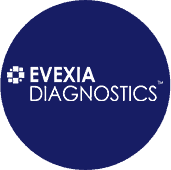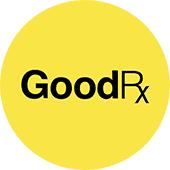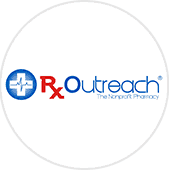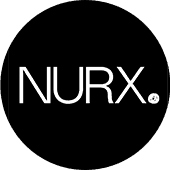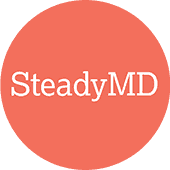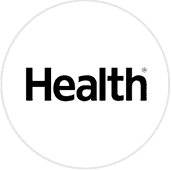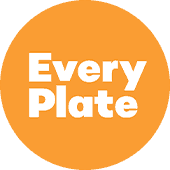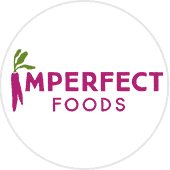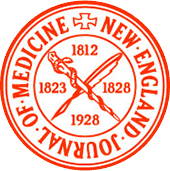The Fasting Lipid Panel is one of the most valuable series of lab tests for gaining an accurate picture of your heart health and cholesterol levels.
But its value lies in understanding what those different lab markers mean (triglycerides, HDL, and LDL) within the context of the entire lipid panel and other key aspects of health.
Despite all the advances in early detection and treatments, heart disease is still America’s number one killer. It has been for decades. Which begs the question: why?
Why, with all the advances in modern medicine and our deeper understanding of the roles fat, cholesterol and stress play in heart health, is heart disease still afflicting the young and old?
And, most importantly, why aren’t these early warning signs being detected in our annual checkups?
Something isn’t adding up.
Actually, a few things don’t add up when it comes to heart disease prediction, prevention and treatment.
Here are the 3 big issues we see in functional medicine as being behind this seemingly unconquerable epidemic:
#1: We’ve been told to fear fats, when the truth is SUGAR has been one of heart’s worst enemies all along.
It’s true.
Per a published study in the November 2016 edition of JAMA[note]https://jamanetwork.com/journals/jamainternalmedicine/article-abstract/2548255[/note] and as reported by NPR News, 50 years ago the sugar industry paid off Harvard researchers to suppress their findings on sugar and instead, point the blame at fat.
Yet many people remain unaware that sugar, NOT FAT, is one of the worst foods you can consume if you’re concerned about heart disease.
Unhealthy fats can play a role in heart health, but it’s not the fats you think…more on this to come.
#2: We’ve just recently discovered the connection between inflammation and heart disease.
A growing body of evidence now suggests if your body is chronically inflammed, that can have a direct impact on the health of your metabolic and circulatory systems[note]https://www.ncbi.nlm.nih.gov/pmc/articles/PMC5488800/[/note],[note]http://www.heart.org/HEARTORG/Conditions/Inflammation-and-Heart-Disease_UCM_432150_Article.jsp#.WyV8WIonbIU[/note].
Sadly, most doctors remain unaware of this connection and the causes of chronic inflammation and thus, often miss the telltale signs early on.
#3: Medicine has been looking at cholesterol all wrong.
New research has shed light on the antiquated ideas that all dietary cholesterol is “bad”, and even that all “bad” cholesterol (AKA: LDL) is harmful (more on the research behind this coming up).
This new information has inspired many progressive healthcare providers and functional medicine doctors, to order a greater variety of labs and focus their attention on new markers.
Now that we’ve covered some of the main issues hindering effective modern heart disease prevention and detection, let’s break down the 3 markers of the Fasting Lipid Panel:
Marker #1: Triglycerides
When we’re looking at the results of your triglyceride test, the main thing we want to know is: what size is your LDL cholesterol?
Why do we care about size over total number?
Because new research has shown that larger LDL particles are more favorable to heart health than smaller particles[note]https://www.ncbi.nlm.nih.gov/pubmed/21981835[/note],[note]https://www.ncbi.nlm.nih.gov/pubmed/8994419[/note].
The reason is, the smaller particles can get into your arteries where they have the potential to create harmful plaque.
Optimal/Functional Ranges of Triglycerides:
- Optimal range
- Less than 100, and if your triglycerides levels can be lower than your HDL levels that’s optimal
- Concern zones
- 100-150—if you’re in this zone, that means there’s not a problem yet, but there may be one brewing
- Warning zone
- 150 and up—the higher you push those triglycerides, the higher your chances of heart disease and fatty liver
Why do we care about fatty liver with regards to heart health?
Fatty liver is commonly associated with metabolic syndrome and insulin resistance, both of which increase your risk for cardiovascular disease[note]https://www.ncbi.nlm.nih.gov/pmc/articles/PMC5437502/[/note].
What Causes High Triglycerides?
As noted above, for years we were told “bad fats” from animal products caused “high cholesterol” which causes heart disease.
But we now know the real culprit behind high triglycerides is carbs…
….specifically sugar…
…and super-specifically fructose from sugar, fruit juice and too much fruit.
Alcohol also negatively affects triglyceride levels due to its sugary nature and impact on the liver.
How to Optimize Your Triglyceride Levels
If your triglyceride levels are in the “concerning” or “warning” zone, the first thing you’ll want to do is to identify and limit the carbs you’re eating—especially those from sugar and alcohol.
We also recommend adopting an exercise regime that helps support normal blood sugar levels.
High Intensity Interval Training and Weight Training are ideal for this purpose.
Additionally, you’ll want to up your intake of omega-3 fatty acids from either a high-quality fish oil or wild-caught fish, like salmon.
Marker #2: HDL—The “Good” Cholesterol
If your overall cholesterol has been flagged as “high”, it’s critical to understand that your HDL level (the “good” cholesterol) factors into that total number.
It’s unfortunate how many people have been misled and told they need medication for their “high cholesterol”, without regard for their HDL/LDL ratios.
If you’ve been told you have “high cholesterol”, be sure to question your healthcare provider about your HDL and LDL levels individually, because if your HDL is high and your LDL is normal that’s actually a good thing.
This is a prime example of why it’s so important to understand your lab markers, so you can ask the right questions before agreeing to any course of treatment.
Optimal/Functional HDL Cholesterol Ranges
- Optimal/functional levels
- Above 59—at this range, you have a negative risk factor for coronary heart disease
- Sub-optimal levels:
- Anywhere below 59
What causes low HDL and How to Raise it:
Genetic and/or lifestyle factors are usually the culprits behind low HDL levels.
Fortunately, increasing HDL is pretty straight-forward.
Just like we recommend for optimizing your total triglycerides, we want you increasing healthy fats in the diet, decreasing unhealthy fats and cutting back on sugars.
Let’s break down these recommendations and see what this would look like:
Increase Healthy Fats:
This is achieved by increasing consumption of omega-3 fatty acids found in:
- Wild-caught fish
- Fish oil
- Walnuts
- Hemp seeds
- Chia seeds
- Flax seeds
- Grassfed meats
- And full-fat dairy products (if you can handle dairy).
Decrease Unhealthy Fats:
When it comes to increasing your HDL and supporting heart health, you’ll want to avoid highly-processed seed and vegetables oils.
Yes, this runs in contrast to conventional dietary recommendations to eat “heart-healthy” vegetable oils.
However, new research shows us these highly refined oils are also highly unstable, often rancid and contain pro-inflammatory omega-6 fatty acids, which, if consumed in excess, can contribute to chronic inflammatory conditions[note]https://www.ncbi.nlm.nih.gov/pmc/articles/PMC3335257/[/note].
Thus, refined vegetable oils should thus be avoided if a healthy heart is the goal.
Unhealthy fats to avoid/eliminate include:
- Canola Oil
- Corn Oil
- Cottonseed oil
- Rapeseed oil
- Peanut oil
- Grapeseed oil
- Safflower Oil
- Sunflower Oil
- Soy Oil
- Any type of hydrogenated or partially-hydrogenated oil
Optimize Blood Sugar Levels
Since we know excess, refined carbohydrates directly contribute to heart disease, we recommend lowering your intake of certain carbohydrates—specifically those from sugar, alcohol and excess fruit juice, dried fruit and whole fruit.
Now don’t get us wrong, an apple a day can still keep the doctor away.
The key is to enjoy moderate amounts of whole fruit, usually between 1-2 servings per day and plenty of fresh vegetables (7-10 servings per day).
When it comes to sugar and sweeteners, you’ll want to be conservative about your choices.
Typically coconut sugar, maple syrup and raw honey are the least processed most healthful sugars; and stevia is our #1 choice for a zero-carb, zero-calorie natural sweetener.
How much natural sugar you can handle, will depend greatly upon your HDL levels and health goals. But, less is best here—even when it comes to natural, zero-sugar sweeteners, like stevia.
The more you can re-train your taste buds to be satisfied with the natural sweetness found in whole foods, the easier cutting back on carbs and sugars will be.
Your Knew Health Coach can help guide you in this regard, and has some incredible tools to help make cutting back on sugar as painless as possible.
Marker #3: The “Bad” Cholesterol, LDL
Unfortunately, LDL cholesterol—AKA “The Bad Cholesterol”—is the one most hyperfocused on in the medical establishment.
And the little-known truth is: there is a ton of confusion in doctor and patient populations, about exactly what LDL is and how it impacts our risk of heart disease.
This confusion has led to an enormous amount of stress, restrictive diets and unnecessary treatments for patients, and has left doctors unsure how to read traditional lab work.
So, let’s clear some of that confusion up with the latest understanding of LDL:
From what we know right now, LDL appears to be a mixed bag of both “bad” and “neutral” cholesterol numbers, and doesn’t necessarily represent the amount of cholesterol in your bloodstream.
If your functional medicine doctor or practitioner believes you do have a cholesterol problem, they would recommend more in-depth tests to accurately determine the amount of cholesterol in your blood.
That said, the LDL test still provides valuable information when viewed within the context of the other two lab markers discussed in this article: triglycerides and HDL.
For example:
- The higher your triglycerides, the smaller your LDL particles—which is a indicative of a problem
- The lower your triglycerides the larger your LDL—which means it’s less problematic and less likely to cause plaque build-up
As you can see, context, the latest research and access to multiple lab markers (the three listed here along with others like your Highly-Sensitive C-Reactive Protein) is absolutely crucial when it comes to getting a clear picture of your heart health
This is so important to understand, before you agree to any form of treatment based on outdated information on “good” and “bad” cholesterol.
If you’re taking cholesterol-lowering medication and are at all concerned you may have been given old information, be sure to talk to your doctor or a functional medicine physician about your options.
Optimal/Functional LDL Cholesterol Ranges
At KNEW, we are more concerned about the size of your LDL than the number, and we determine this by matching your LDL with your triglycerides.
Typically, the higher your triglycerides, the smaller your LDL particles which means they’re more likely to form harmful plaques.
The lower your triglycerides (optimal being less than 100), the larger your LDL particles which are far less concerning.
- Optimal/functional levels of LDL
- Typically less than 130
If your LDL levels are high and/or you have active heart disease or a history of heart attack, it’s important you work with your cardiologist to get that number into their recommended range.
If there are concerns about your LDL particle size, you would work with your Knew Health Coach or practitioner, and follow the advice on lowering triglycerides above.
How Often Should You Get Your Lipid Levels Checked?
At least annually, or at the discretion of you and your Health Coach/doctor.
To Recap:
- You want your Triglyceride levels low
- You want your HDL levels high
- You want your LDL levels moderate—less than 130, or the number your cardiologist recommends
- Keep sugar and fructose to a minimum for optimal heart health
- Increase healthy fats and omega-3s
- Decrease unhealthy fats (vegetable and seed oils) and omega-6s
- Get regular exercise—high intensity interval training and weight lifting is best for blood sugar balance
- Have your labs checked annually, or at the discretion of your healthcare practitioner
We tell our Knew Health members, it’s important they work with their Knew Health Coach to determine the best individual course of action, based on your combined lipid profile, your inflammation levels (high-sensitivity c-reactive protein), your age and your blood pressure.
It’s all about context and viewing your body as a whole.
To your heart health,
-The Knew Health Team




